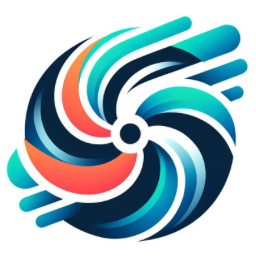Building successful team workflows is crucial for any organization looking to improve efficiency and productivity. In this article, you will discover the ten essential steps that will guide you in creating effective workflows that promote collaboration and enhance the overall performance of your team. From defining clear goals to establishing regular communication channels, these steps will empower you to streamline processes, maximize resources, and foster a culture of teamwork that delivers exceptional results. So, let’s dive into these essential steps and unlock the potential of your team’s productivity together!
Defining the Goals of the Team
Understanding the objectives of the team
Before embarking on any project, it is crucial to have a clear understanding of the objectives of the team. This involves identifying the purpose and desired outcomes of the project. By having a comprehensive understanding of the goals, team members can align their efforts and work towards a common objective. This understanding will also serve as a guide throughout the project, helping the team stay focused and motivated.
Setting up concrete and achievable goals
Once the objectives are established, it is essential to set up concrete and achievable goals. These goals should be specific, measurable, attainable, relevant, and time-bound (SMART). By setting clear goals, team members have a clear direction and can gauge their progress. It also provides a framework to evaluate the success of the project and make necessary adjustments along the way.
Establishing short-term and long-term goals
In addition to concrete goals, it is important to establish both short-term and long-term goals. Short-term goals help create momentum and provide small wins along the way, keeping the team motivated. Long-term goals, on the other hand, provide a vision for the future and allow for strategic planning. By balancing short-term and long-term goals, the team can stay focused on immediate tasks while keeping the bigger picture in mind.
Ensuring all team members are clear about the goals
While it is important to define and establish goals, it is equally important to ensure that all team members are clear about these goals. This can be achieved through effective communication, regular check-ins, and discussions. By ensuring everyone understands the goals, team members can align their efforts and work towards a common purpose. It also fosters a sense of accountability and ownership among team members.
Identifying Individual Roles
Defining individual responsibilities
In order for a team to function effectively, it is crucial to define individual responsibilities. This involves identifying the unique skills and expertise of each team member and assigning roles accordingly. By clearly defining responsibilities, team members have a clear understanding of their own tasks and can work collaboratively towards the common goals. It also helps avoid duplication of efforts and confusion.
Creating a balance setup of roles within the team
A successful team requires a balance in terms of roles and responsibilities. This involves ensuring that the team composition reflects the diverse skill sets required for the project. By creating a balanced setup of roles, the team can leverage the strengths of each individual, leading to higher productivity and efficiency. It also promotes collaboration and avoids overburdening certain members of the team.
Ensuring every member is aware of their specific roles
It is not enough to simply assign roles; it is equally important to ensure that every team member is aware of their specific roles. This can be achieved through clear communication and regular updates. By ensuring that everyone understands their roles, team members can work cohesively without any confusion or overlap. It also fosters a sense of ownership and accountability among team members.
Establishing authority and reporting lines
In order to maintain a well-functioning team, it is crucial to establish authority and reporting lines. This involves defining who has decision-making power and who team members should report to. By clearly establishing authority, team members know who to turn to for guidance and support. It also helps streamline the communication process and ensures that everyone is on the same page.
Establishing Communication Channels
Deciding on appropriate means of communication
Effective communication is the cornerstone of successful teamwork. It is important for the team to decide on appropriate means of communication that suit their needs and preferences. This could include face-to-face meetings, virtual meetings, email, messaging apps, or project management tools. By selecting the right communication channels, the team can ensure that information flows smoothly and efficiently.
Agreeing on communication guidelines
Along with selecting communication channels, it is crucial for the team to agree on communication guidelines. This involves establishing norms and expectations for communication, such as response times, tone of communication, and etiquette. By setting clear guidelines, the team can avoid misunderstandings, conflicts, and delays in communication. It promotes professionalism and fosters a positive team environment.
Encouraging open and effective communication
While guidelines provide a framework, it is important to encourage open and effective communication within the team. This involves creating an environment where team members feel comfortable expressing their ideas, concerns, and feedback. By promoting open communication, the team can benefit from diverse perspectives and find innovative solutions. It also builds trust and strengthens collaboration among team members.
Respecting everyone’s views and opinions during communication
In order to maintain a respectful and inclusive team environment, it is essential to respect everyone’s views and opinions during communication. This involves actively listening to others, valuing their contributions, and giving each team member a chance to express themselves. By respecting different perspectives, the team can foster creativity, cooperation, and mutual understanding. It also encourages a culture of inclusivity and diversity within the team.
Implementing Team Collaboration Tools
Evaluating the requirement of digital tools
In today’s digital age, team collaboration tools play a vital role in enhancing productivity and efficiency. It is important for the team to evaluate the specific requirements and identify the need for digital tools. This involves considering factors such as project complexity, team size, and remote work capabilities. By assessing the requirements, the team can select the right tools that align with their workflow and objectives.
Choosing the right tools that support teamwork
Once the requirements are identified, it is crucial to choose the right tools that support teamwork. This could include project management software, file-sharing platforms, communication apps, or task tracking tools. By selecting tools that align with the team’s needs, members can collaborate seamlessly, share information effortlessly, and track progress efficiently. It enhances transparency and promotes effective teamwork.
Standardizing the use of these tools for all members
In order to maximize the benefits of team collaboration tools, it is important to standardize their use for all members. This involves establishing guidelines and providing training on the usage of these tools. By standardizing their use, the team ensures consistency, minimizes confusion, and facilitates seamless collaboration. It also enhances communication and allows for smooth integration of workflows.
Training on usage and compliance with these tools
To ensure that team members are proficient in using collaboration tools, it is essential to provide proper training and support. This involves conducting training sessions, sharing tutorials or user guides, and addressing any concerns or questions. By offering training on the usage of these tools, the team can maximize their potential and reap the benefits of streamlined workflows. It also encourages a culture of continuous learning and improvement.
Creating Workflow Procedures
Designing a step-by-step process of operations
A successful team workflow requires a well-defined and documented step-by-step process of operations. This involves designing a workflow that outlines the sequence of tasks, responsibilities, and dependencies. By creating a clear process, team members have a roadmap to follow, reducing ambiguity and enhancing efficiency. It also allows for easier delegation, task tracking, and accountability.
Standardizing these processes across the team
Once the workflow is designed, it is important to standardize these processes across the team. This involves ensuring that all team members follow the same procedures and guidelines. By standardizing processes, the team can ensure consistency in the quality and delivery of work. It also facilitates collaboration, as team members can easily understand and adapt to each other’s workflows.
Ensuring everyone understands and follows the processes
In addition to standardizing processes, it is crucial to ensure that everyone understands and follows these processes. This can be achieved through clear communication, training, and regular check-ins. By ensuring that everyone is on the same page, team members can work together seamlessly and avoid any bottlenecks or delays. It also promotes accountability and fosters a sense of ownership among team members.
Evaluating and improving workflow procedures periodically
A successful team workflow is not static; it requires continuous evaluation and improvement. It is important for the team to regularly assess their workflow procedures and identify areas for enhancement. This could involve soliciting feedback from team members, conducting periodic reviews, or analyzing performance metrics. By evaluating and improving workflow procedures, the team can optimize efficiency, overcome challenges, and adapt to changing needs.
Building Trust Among Team Members
Encouraging transparency and honesty among team members
Trust is the foundation of any successful team. It is essential to encourage transparency and honesty among team members. This involves creating an environment where people feel comfortable sharing their thoughts, concerns, and feedback openly. By promoting transparency, team members can build trust and establish a strong foundation for collaboration. It also fosters a culture of accountability and open communication.
Creating a supportive and safe environment
In order to build trust, it is important to create a supportive and safe environment. This involves fostering a culture of respect, empathy, and inclusivity. By creating a safe space, team members can feel comfortable expressing themselves, taking risks, and learning from mistakes. It also promotes psychological safety, which is essential for innovation, creativity, and effective problem-solving.
Recognizing and acknowledging contributions
Building trust also involves recognizing and acknowledging the contributions of team members. This can be done through praise, rewards, or public recognition. By celebrating achievements, team members feel valued and motivated to continue giving their best effort. It also fosters a culture of appreciation and positivity within the team.
Promoting team building activities
Team building activities play a crucial role in building trust and fostering strong relationships among team members. This could include social events, team retreats, or collaborative projects. By promoting team building activities, the team can develop camaraderie, improve communication, and strengthen bonds. It also creates a sense of belonging and enhances overall team morale.
Setting Performance Metrics
Identifying Key Performance Indicators (KPIs)
Performance metrics are essential in evaluating the success and progress of the team. It is important to identify Key Performance Indicators (KPIs) that align with the goals and objectives of the project. These KPIs could include metrics such as productivity, customer satisfaction, or project deadlines. By identifying the right KPIs, the team can measure success, track progress, and make data-driven decisions.
Monitoring and tracking progress against KPIs
Once the KPIs are identified, it is crucial to monitor and track progress against these metrics. This can be done through regular check-ins, progress reports, or project management tools. By tracking progress, the team can identify any gaps or areas of improvement, and take necessary actions. It also provides a sense of accountability and helps keep the team focused on achieving their goals.
Sharing feedback and progress regularly with the team
Along with monitoring progress, it is important to share feedback and progress updates with the team regularly. This involves providing constructive feedback on individual and team performance, acknowledging achievements, and addressing any challenges or issues. By sharing feedback, the team can foster a culture of continuous improvement and learning. It also ensures that everyone is aware of their performance and can make necessary adjustments.
Adapting the metrics as per workflow changes
As workflows evolve and change, it is important to adapt the metrics accordingly. This involves regularly reviewing and reassessing the chosen KPIs to ensure they remain relevant and aligned with the team’s objectives. By adapting the metrics, the team can effectively measure success and focus on the areas that contribute to achieving their goals. It also allows for flexibility and agility in responding to changing project requirements.
Continuous Training and Development
Evaluating training needs of the team
Continuous training and development are essential for the growth and success of the team. It is important to regularly evaluate the training needs of the team. This involves identifying skills gaps, areas for improvement, or new technologies that could benefit the team. By evaluating training needs, the team can bridge the gaps and acquire the necessary skills to excel in their roles.
Providing opportunities for personal and professional growth
Once the training needs are identified, it is important to provide opportunities for personal and professional growth. This could include workshops, seminars, online courses, or mentorship programs. By investing in the development of team members, the team can enhance their capabilities and increase their value. It also fosters a culture of continuous learning and improvement.
Incorporating feedback into the training programs
Feedback is a valuable tool for improvement and growth. It is important to incorporate feedback from team members into the training programs. This could involve soliciting feedback through surveys, one-on-one meetings, or team discussions. By incorporating feedback, the team can ensure that the training programs are relevant, engaging, and meet the specific needs of team members. It also shows that their opinions are valued and contributes to a positive team environment.
Encouraging continuous learning and upskilling
In addition to formal training programs, it is important to encourage continuous learning and upskilling within the team. This could involve sharing relevant articles, resources, or organizing knowledge-sharing sessions. By encouraging continuous learning, team members can stay updated with industry trends, acquire new skills, and bring fresh perspectives to the team. It also fosters a culture of curiosity, growth, and innovation.
Dealing with Challenges and Problems
Identifying potential problems in the workflow
Challenges and problems are inevitable in any project. It is important to proactively identify potential problems in the workflow. This involves analyzing the workflow, anticipating any bottlenecks or areas of concern, and brainstorming solutions. By identifying potential problems, the team can take preventive measures and minimize their impact on the overall project. It also allows for effective resource allocation and risk management.
Creating a system for conflict resolution
Conflict can arise within any team. It is important to create a system for conflict resolution that enables open dialogue and mutual understanding. This involves setting up clear protocols for resolving conflicts, such as providing a safe space for expressing concerns, active listening, and mediation if needed. By having a system for conflict resolution, the team can address issues in a timely and constructive manner, preserving relationships and maintaining productivity.
Seizing challenges as opportunities for improvement
Challenges should be viewed as opportunities for improvement. Instead of being discouraged by challenges, it is important to embrace them and see them as chances to learn and grow. By reframing challenges as opportunities, the team can foster a positive mindset and encourage innovation and problem-solving. It also builds resilience and adaptability within the team.
Encouraging open dialogue about problems and solutions
Open dialogue is essential in addressing problems and finding effective solutions. It is important to create a team culture where open dialogue about problems is encouraged. This involves creating a safe space for team members to voice their concerns, ideas, and potential solutions. By encouraging open dialogue, the team can tap into the collective intelligence and find innovative solutions. It also promotes collaboration, trust, and engagement.
Adaptability and Flexibility
Adapting to evolving project or team requirements
Projects and teams are dynamic, and it is important to adapt to evolving requirements. This involves being flexible and agile in responding to changes in project scope, deadlines, or team composition. By embracing adaptability, the team can overcome challenges, maintain productivity, and ensure successful project delivery. It also demonstrates resilience and a willingness to learn and grow.
Embracing changes and innovation in workflows
In addition to adapting to external changes, it is important to embrace changes and innovation within the team’s workflow. This could involve exploring new technologies, methodologies, or processes that could enhance productivity and efficiency. By embracing changes in workflows, the team can stay at the forefront of industry developments, improve collaboration, and foster creativity and innovation.
Maintaining a flexible attitude towards problem-solving
Flexibility is key in problem-solving. It is important to maintain a flexible attitude and be open to different approaches and solutions. By being flexible, the team can adapt their problem-solving strategies based on the specific context and challenges they face. It also promotes creative thinking and allows for experimentation, leading to more effective and efficient problem-solving.
Adjusting roles and processes as per changing needs
As projects and teams evolve, it may be necessary to adjust roles and processes to meet changing needs. This could involve reassigning responsibilities, redistributing workloads, or modifying workflows. By adjusting roles and processes, the team can optimize efficiency, maintain engagement, and adapt to new demands. It also allows team members to leverage their strengths and contribute effectively to the project’s success.
In conclusion, building successful team workflows involves several essential steps. From defining clear goals to establishing effective communication channels, identifying individual roles, implementing collaboration tools, and continuous training and development. It is important to create a supportive and transparent environment that fosters trust, embraces adaptability, and encourages innovation. By following these steps and continuously evaluating and improving workflow procedures, teams can enhance their productivity, collaboration, and overall success.







